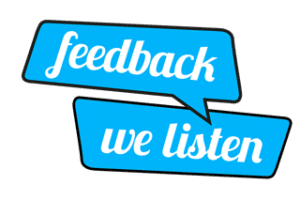Maybe this is wrong of me to do but I’m going to assume that if you’re reading this article you’re a small business owner. Or you want to be. Perhaps you have a business website but you don’t see that it’s really doing anything to help your business. Or maybe you don’t have a website for your business yet and you’ve been told they aren’t worth the investment. Either way, when you finish reading this article, you’ll be able to spot some of the most common small business website problems. And correct or avoid them on your own site.
Doesn’t play well with mobile devices
Now, more than ever, people access the Internet from mobile devices more than they do from a desktop computer. Nearly 75% of users will return to mobile-friendly websites. Google has also made being mobile-friendly a requirement for getting good placement on the search engine. And they’re fairly picky. They want every font to be easy to read, every button and link to be large enough for fingers to tap, and they want sites to load quickly and not use excessive bandwidth.
No way to measure success
Metrics are the only way to truly measure the success of a small business website. Sadly, many business owners don’t know how to read a report from Google Analytics and settle for knowing how many people visited their website and the percentage of first-time visitors compared to returning visitors. And some business owners don’t know how to set up a Google Analytics account or install the tracking number.
It’s important to establish tracking benchmarks when a business website is launched. And equally important to review those numbers on a regular basis to know how the website is performing.
Little or no SEO on the site
We all know that SEO requirements aren’t always easy to figure out and as soon as you think you’ve got it, the rules change again. It seems the only small business owners with the time necessary to keep up with it are the ones who provide SEO services. Too many small business websites can’t be found in online searches. They don’t have enough optimization to earn a Google page rank above 0.
Content from the Dark Ages
Business websites are frequently ignored after the initial launch. In fact, 64% of small business owners say that it’s next to impossible to find the time to update their website. The cost of paying someone else to do the updates often doesn’t fit into the budget. Because of this, out-dated content is one of the most prevalent business website problems.
Entrepreneurs tend to be a hands-on group when it comes to their business and doing things for themselves comes naturally. However, this approach can result in less time to engage with customers.
TMI
Information overload is one way to turn potential prospects into website bouncers. Many small business websites try too hard to fully educate the visiting public right smack dab on the home page. These websites rely heavily on things that don’t matter to customers. A small business website should instead put the customers front and center, letting them know how this business will benefit them.
No one hired a proofreader
It seems like this one should go without saying but it can’t. Misspelled words and incorrect grammar have no place in the content of a business website. Don’t rely on a spellchecker. Instead, install an app like Grammarly that also checks grammar. Errors on a small business website disrupt the flow of information. Visitors will leave and look at the next website on the list.
Getting lost in the navigation
Have you ever gone to a favorite store outside of your home town? For some reason you expect the layout of the store to be exactly the same as the store you usually shop at. Frustration happens quickly when you can’t find what you’re looking for. Small business websites sometimes have their own version of this. Using clever words or phrases in the website navigation is good for branding if it makes sense to visitors. However, it’s important that visitors understand what they’ll find after clicking on a link.
Poor quality design
The first impression a user gets from a website is based on the design. Business website problems often stem from a design that’s boring. With great intentions, entrepreneurs make do with a DIY website and a pre-built template.
Forgot to add calls to action
This is a biggie. How is a visitor to the website supposed to know what to do if there aren’t any signposts to lead the way? To convert visitors into customers there must be a clear path for the visitor to follow. And conversions are what every business person is looking for.
Lack of social proof
Everyone knows that word-of-mouth advertising is the best (and least expensive) way to gain new clients and customers. For some reason, though, many small business websites fail to include any reviews or testimonials. While this might make sense for a new business, an established shop should have regular customers who have complementary words to share.
Unfocused branding
Branding goes beyond including the logo and using the brand colors and fonts. Above all, It says something about the business. It reflects the style, personality, and values that differentiate this business from the one down the street. This creates the brand and makes the small business memorable.
In review
After reading through this list of business website problems, you know what to look for in your own business website. Don’t get overwhelmed if you find a few. My specialty is building successful small business websites.



 1. Engage Customers Through Various Channels
1. Engage Customers Through Various Channels